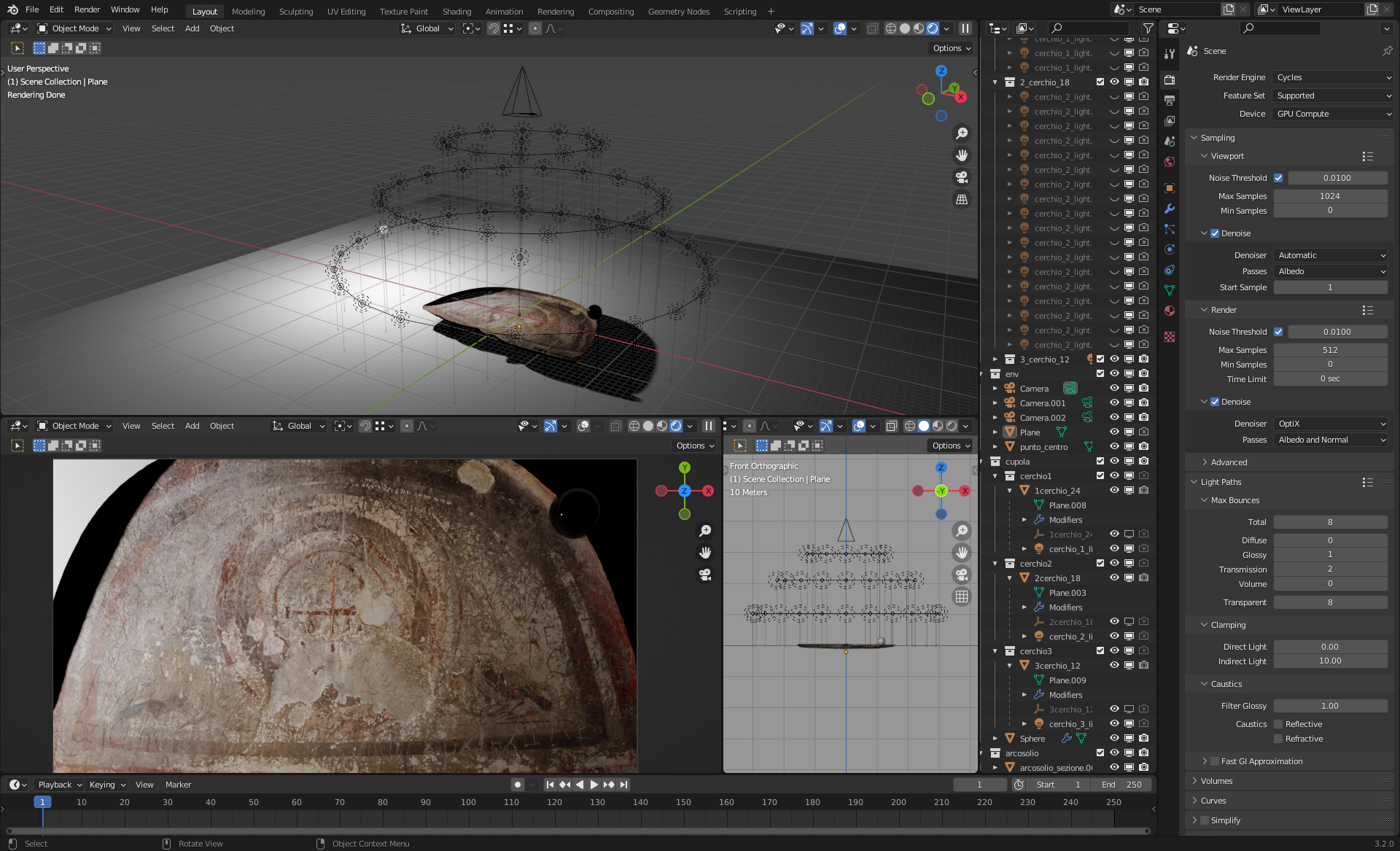ArcheoFOSS 2022
Virtual RTI Application on 3D model for documentation of ancient graffiti: a propose of methodology for a complex archaeological site
Eleonora Minucci
Università degli Studi di Napoli "L'Orientale", Napoli, Italy
Angela Bosco
Università degli Studi di Napoli "L'Orientale", Napoli, Italy
Daniele De Luca
VisitLab Cineca - Consorzio Interuniversitario, Napoli, Italy

Panel: Practice and Paradigms of Open Source Technologies for Archaeological Field Data.
In the field of Cultural Heritage, the technological advances of recent years have enriched and optimized the possibility of documenting and studying ancient graffiti with a wide range of low-cost and non-invasive methodologies. The most popular are digital photogrammetry with SfM (Structure from Motion) algorithms and RTI (Reflectance Transformation Imaging) methodology. The RTI is a very powerful tool that, through the use of open source software, enables the documentation of particular data that are difficult to visualise, facilitating the recognition of traces and marks on the surface of objects. On the other hand, the SfM 3D models are increasingly replacing documentation with traditional photographs. This “almost excessive” production of three-dimensional models is often not accompanied by an adequate exploitation of all their potential uses.
This research aims to investigate the possibility of using a high-resolution 3D model for the implementation of virtual RTI processing, a hybrid method that combines 3D, virtual manipulation and 2D+ technologies in a fast and intuitive workflow suitable for the documentation of a wide range of archaeological monuments. The pipeline sees the 3D model from the SfM survey being illuminated and photographed in a virtual dome in the open source Blander environment; therefore, the images generated are processed with RTI Builder software.
Since the virtual dome can be scaled and rotated to different positions, the V-RTI methodology is valid when the object is too large for a traditional RTI acquisition or when this is geometrically complex. The virtual environment also allows to solve the problem of self-occlusion caused by the shadows of the illuminated target-sphere that may be found on the surface of the object. Furthermore, the V-RTI is very useful in remote sites which are difficult to access or where logistical problems exist, and where therefore too many acquisitions are not recommended in situ. This is the case of the Catacombs of San Gennaro in Naples, a vast hypogeum maze characterised by special soft lighting and visited every day by large tourist flows.
As part of a major international project, high-resolution 3D models of the entire complex are available. Among these, the present contribution analyses a frescoed niche characterized by innumerable engravings on the entire surface of the arcosolium. The research highlights how the combination of two different open source applications, one made for cultural heritage, the other for graphic modelling, is a valid support for archaeological analysis by allowing the reuse of previous 3D data for graffiti identification. It is also highlighted how the result of the V-RTI strictly depends on the resolution of the 3D model used. Finally, we underline what are the potentiality and the limits of using these applications to improve methods and practical application in a complex context such as the Catacombs of San Gennaro.
License
This text is released with CC BY ND 4.0 license. Copyright Eleonora Minucci, Angela Bosco Daniele De Luca 2022.